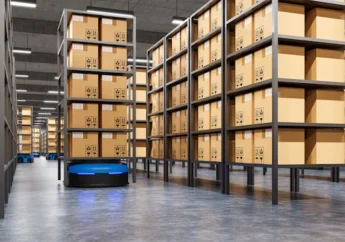Cutting-Edge Strategies For Reducing Energy Consumption In Workspaces
by Ankita Tripathy Business Development Published on: 02 February 2024 Last Updated on: 20 May 2025

In today’s business world, the spotlight is on environmental sustainability and cost management, making the reduction of energy consumption in workspaces a top priority. This guide offers a deep dive into innovative strategies that substantially lower energy usage in offices, combining the latest in technology with practical methods to foster workspaces that are both efficient and eco-friendly according to Allied Experts from Cherry Hill, NJ.
What Are The Benefits Of Reducing Energy Consumption?
There are benefits galore in reducing the energy consumption in your office space. Business organizations are taking steps to reduce costs and expenditures. One is using energy, where the stakeholders are looking to take drastic steps. This section discusses some of the prime advantages of reducing energy consumption.
Improved Lighting

One of the major advantages of reducing energy consumption is improved lighting. Business organizations are looking to induce different technologies like LED lights to improve the lighting and aesthetics within the workplace. According to a study, the employees have higher job satisfaction. This hurts the overall performance of the office. With a better mood, the organization can improve productivity. The use of natural lights also decreases the strain on the eyes.
Noise Reduction
According to the study, office space with wide-opened windows helps in reducing noise. Studies show that excessive distractions in the workspace decrease the performance of the office. A 66% decrease in performance can be highly disruptive so far as enhancing office performance is concerned. Implementing energy-efficient measures like acoustic panels and double-glazed windows can be highly beneficial.
Healthy Work Environment
According to one study by the T.H. Chan School of Public Health, office employees improve their work significantly by inducting the optimized indoor approach. It is said that the office indoors optimized to bring in natural light increases the performance of the employees to quite an extent.
Employee Wellbeing
One of the benefits of reducing energy consumption is employee well-being. If you have an office, you would try to bring in the changes that help employees perform better. An energy-efficient workplace can save you costs. You can provide better salaries to the employees. Companies are, therefore, looking for advanced ventilation and filtration systems.
What Are The Different Strategies To Reducing The Energy Consumption?
Reducing energy consumption has emerged as one of the prime targets of humanity. Especially the consumer of energy keeps on increasing in the office space. However, here we discuss some of the most effective strategies for reducing energy consumption and costs. So, let us get started with the discussion.
Embracing Smart Building Tech

The rise of smart building technologies marks a new era in energy management. These systems, powered by sensors, IoT devices, and AI algorithms, fine-tune energy use in real-time. Smart thermostats, for instance, adjust heating and cooling based on occupancy and weather conditions. Smart lighting systems respond to the presence of people, dimming or switching off in empty spaces, and smart windows automatically adjust their tint to minimize heating and cooling demands.
Adopting Renewable Energy
Integrating renewable energy sources like solar panels and wind turbines drastically cuts dependence on traditional power grids. Solar technology has advanced in efficiency and affordability, making it a practical choice for many businesses. Battery storage systems complement this by storing surplus energy, ensuring a steady power supply and less reliance on non-renewable sources.
Opting For Energy-Efficient Office Gear
Switching to energy-efficient office equipment, such as Energy Star-rated computers, printers, and light fixtures, can lead to significant energy reductions. Favoring laptops over desktops can further cut down energy usage, as laptops typically are more efficient.
Green Building Design And Materials
The architectural design of a workspace significantly influences its energy consumption. Green building designs that maximize natural lighting and ventilation can substantially reduce the need for artificial lighting and air conditioning. Additionally, using sustainable materials with superior insulation properties helps in maintaining indoor temperatures, decreasing the need for heating and cooling.
Fostering A Culture Of Sustainability

Encouraging sustainable habits among employees can lead to notable energy savings. Simple actions, like switching off lights and computers when not in use, opting for stairs over elevators for short distances, and minimizing paper use, can collectively make a significant impact. Regular training and incentives can motivate staff to adopt these energy-saving practices.
Supporting Telecommuting And Flexible Hours
Encouraging telecommuting and flexible working hours can reduce the office’s energy demand. Fewer people in the office means lower requirements for lighting, heating, cooling, and electronic equipment, also contributing to decreased commuting-related carbon emissions.
Conducting Regular Energy Audits
Regular energy audits can pinpoint wasteful practices and suggest improvements. These audits evaluate the efficiency of HVAC systems, lighting, office appliances, and insulation, leading to targeted changes that can greatly reduce energy use.
Implementing Water Conservation
Water conservation, often overlooked, is crucial in reducing a workspace’s energy footprint. Installing low-flow faucets, toilets, and urinals can cut down water usage, thereby reducing the energy needed for water heating and treatment.
Promoting Sustainable Transport
Encouraging sustainable commuting options like biking, walking, or public transport can diminish the workforce’s overall carbon footprint. Providing amenities such as bike storage and showers can support employees who opt for these greener commuting methods.
Leveraging Data Analytics

Advanced data analytics is key in managing energy usage. By examining energy consumption patterns, companies can pinpoint inefficiencies and devise focused strategies for reduction. Predictive analytics can forecast future energy needs, allowing for proactive energy usage adjustments.
Investing In Carbon Offset Initiatives
For unavoidable energy use or non-renewable energy reliance, companies can invest in carbon offsetting initiatives. These might include reforestation efforts or supporting renewable energy projects elsewhere, balancing the workspace’s carbon footprint.
Collaborating For Greater Impact
Sharing best practices and innovations in energy reduction with other businesses and organizations can enhance the overall impact. Engaging in industry forums and sustainability networks opens doors to new ideas and technologies.
In summary, reducing energy consumption in workspaces is a multifaceted endeavor that involves technology, behavior, and design. By embracing these advanced strategies, businesses can not only cut costs but also make a significant contribution to environmental sustainability. Staying informed about and adapting to ongoing technological advancements is crucial for companies aiming to create the most efficient and eco-friendly work environments.
Read Also:



































































































